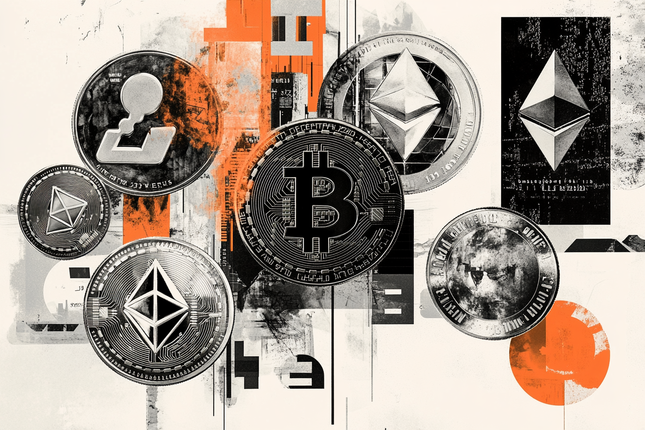The concept of automated trading is relatively self-explanatory; it’s the principle of using software, often referred to as scripts, algorithms, bots, expert advisors and other phrases, to automatically execute a predefined trading strategy on behalf of a trader. Automated trading solutions are used throughout the entire capital markets secretor, and the practice is used by players at every level. Retail forex traders, hedge funds, asset managers, banks, market makers, crypto traders and futures and options traders all find a use for trading algorithms.
In the past decade, traders from all backgrounds have embraced automated trading solutions to various degrees. The technical and financial barrier related to developing complex auto-trading systems has been decreasing rapidly. We’re now at a point where nearly anyone in the forex trading community has the means to build an algorithm to automate their trading strategy.
For example, a retail trader with an account size of just a few hundred dollars can learn how to write automated trading scripts from the endless videos in YouTube and tonnes of previously addressed frequently asked questions in the many online trading forums. Once their trading algorithm is developed, they can run it on a trading platform like MetaTrader 4, which is typically provided by forex brokers for free. Retail traders may run the trading application operating their bot continuously on a VPS which may cost in the region of twenty-dollars a month.
In contrast, a multimillion-dollar prop-trading firm with dozens of developers and analysts may create complex high-frequency proprietary trading algorithms. The firm could deploy the software on hardware that costs as much as several thousand dollars per month to lease in co-location centres such as the Equinix LD5 data centre in London, alongside the trading servers of all major banks and forex market participants.
In this article, we’ll explore how automated trading became so mainstream in the forex industry, what the advantages of automating a trading strategy are and an overview of what the various automated trading solutions that are highly adopted in the forex community.
How automated trading became mainstream?
Many of us have MetaQuotes to thank for their role in vastly reducing the barrier of entry to the world of automated trading. In 2005, MetaQuotes, a software developer, released MetaTrader 4, the fourth version of its financial markets trading and charting applications. MT4 introduced numerous sophisticated trading features which helped the platform gain popularity in the forex trading industry.
By 2010, MT4 had become the defacto standard trading platform for brokers providing online forex & CFD trading services. What earned MT4 so much notoriety amongst forex traders was the capabilities for developing automated trading strategies, popularised as Expert Advisors (EAs). MetaTrader 4 offered a proprietary programming language called MetaQuotes Language Version 4 aka MQL4 and an application called MetaEditor for developing the scripts.
A large community of traders emerged as advocates of MT4. The online forum that hosts the community of MetaTrader users is one of the most visited investing websites in the world.
MT4 is by no means the only trading platform with automated trading capabilities. If you’re in the process of choosing a forex trading platform, make sure to check if the platform you're considering has algorithmic trading capabilities.
What are the advantages of automated trading solutions?
Humans are inherently flawed by their biases, limited by their basic needs and unable to process anywhere near as much information as a computer. Just as many other industries have adopted automation to increase productivity, traders have done the same. Here are some of the top reasons why traders automate their trading strategies.
Automated trading systems eliminate human emotions
Forex trading robots eliminate human behaviour from the process of trading. Humans are susceptible to hundreds of biases that cause significant flaws in judgement. One of the most notorious behavioural anomalies traders experience is the disposition effect. The disposition effect is, in essence, the notion that people dislike losing far more than they enjoy losing.
Translated into the context of trading and risk management, it implies that traders would rather close a position at break-even or with just a couple of pips profit, for the sole purpose of evading a loss. Even worse, some traders find themselves reluctant to close a losing position that results from a failed trade set up, because they hate the idea of losing and hope the market will pivot. If they can close the trade with just a few cents profit, it will still feel like a win, regardless of how much is won.
Similarly, traders who fall victim to the disposition effect often close profitable positions too early because they’re afraid of pullback and the thought of losing if they don’t take decisive action. When you combine the actions of letting unprofitable positions lose excessively and close the profitable positions too early, it’s a recipe for the worst ever risk-reward ratio.
Traders use automated trading solutions to prevent their emotions from getting the better of them. An automated trading strategy can follow a strict risk-to-reward ratio and will not care how many times it wins or loses, only that it must follow the rules.
Humans can only process a limited amount of information
As the financial markets operate across all timezones, there is never a shortage of opportunities, especially in the forex market. Some traders develop systems that analyse the relationships of multiple currency pairs and even asset classes to determine trends across different timeframes. Other traders incorporate dozens of technical analysis indicators into their systems and wait for a sequence of indicators to line up and generate a signal. Dealing with this much information can be exhausting.
An automated trading solution can process countless pieces of concurrent information and make split-second decisions twenty-four hours a day, unlike a human who needs regular breaks and many hours of rest. A trading bot can cover much more ground than its human counterpart.
Disregard for market sentiment and fundamentals
As an active trader, you’ll be paying close attention to the current economic and geopolitical news. The constant too and throw of whether there will or won’t be a Brexit deal. Or, positive coverage about positive results from COVID-19 vaccines or negative coverage about rising cases and hard lockdowns in major financial centres like New York and London may influence your attitude to the market.
The reality is that fundamental news is almost always already priced into the market, and the price reflects sentiment. This is particularly true for the lower timeframes. Trading algorithms can ignore the external sentiment and fundamental details about the market, and focus solely on technicals and price movement.
A drawback of automated trading systems is not knowing about the economic news events, such as the NFP and similar reports which can influence the market in the short term. It’s possible the bot will not understand the context behind the short term volatility, and it can misinterpret price action. Therefore, many automated trading strategies are programmed to disregard high-impact news announcements.
How to get started with automated trading?
If you’re interested in getting started with automated trading in the forex market, you’ll be pleased to know there are numerous free to use platforms and resources to get you started. Popular trading platforms such as MetaTrader 4, as mentioned earlier in the article, have all the resources traders need to build EAs and custom indicators. cTrader, another popular forex trading platform offered by Scandinavian Capital Markets, has outstanding capabilities for developing, testing and running cTrader Robots, aka cBots.
Besides having to code your own EA or cBot, other methods of taking advantage of automated trading systems are to automatically copy the trades of other trading strategies in your own account using a popular copy trading service like Myfxbook.
For more sophisticated traders, they may choose to build a completely custom trading system which is independent of any trading platform and connect it to various brokers via the FIX API.
However you want to automate your trading strategy, we’ll have a solution suitable for you at Scandinavian Capital Markets.
Any reviews, news, research, analysis, prices or other information contained in this article is provided as general market commentary, does not constitute investment advice and may undergo changes from time to time. Trading the Financial and Currency Markets on margin carries a high level of risk and may not be suitable for all investors. The high degree of leverage can work against you as well as to your favor. Before entering trading Financial and Currency Markets, you should carefully consider your investment objectives, level of experience and risk appetite. There is a possibility that you could sustain a loss of some or more of your initial investment and therefore you should not invest money which you cannot afford to lose. You should be aware of all the risks associated with Financial and Currency Markets trading, and in case you have any doubt, rather seek advice from an independent financial advisor. Scandinavian Capital Markets AB, its owners, employees, agents or affiliates do not give investment advice, therefore Scandinavian Capital Markets AB assumes no liability for any loss or damage, including without limitation to, any loss of profit, which may be suffered directly or indirectly from use of or reliance on such information. Scandinavian Capital Markets AB strongly encourages consultation with a licensed representative or financial advisor regarding any particular investment or use of any investment strategy.
Editors’ Picks

GBP/USD runs beyond 1.3400 on BoE, US CPI
The GBP/USD pair jumped towards the 1.3440 area on Thursday, following the Bank of England decision to cut rates, and US CPI data, which resulted much softer than anticipated. The pair holds on to substantial gains early in the American session.

EUR/USD ticks north after ECB, US inflation data
The EUR/USD pair hovered around 1.1750 but is still unable to conquer the price zone. The European Central Bank left interest rates unchanged, as expected, upwardly revising growth figures. The US CPI rose 2.7% YoY in November, down from the 3.1% posted in October.

Gold nears $4,350 after first-tier events
The bright metal advances in the American session on Thursday, following European central banks announcements and the United States latest inflation update. XAU/USD approaches weekly highs in the $4,350 region.

Crypto Today: Bitcoin, Ethereum hold steady while XRP slides amid mixed ETF flows
Bitcoin eyes short-term breakout above $87,000, underpinned by a significant increase in ETF inflows. Ethereum defends support around $2,800 as mild ETF outflows suppress its recovery. XRP holds above at $1.82 amid bearish technical signals and persistent inflows into ETFs.

Bank of England cuts rates in heavily divided decision
The Bank of England has cut rates to 3.75%, but the decision was more hawkish than expected, leaving market rates higher and sterling slightly stronger. It's a close call whether the Bank cuts again in February or March.
RECOMMENDED LESSONS
Making money in forex is easy if you know how the bankers trade!
I’m often mystified in my educational forex articles why so many traders struggle to make consistent money out of forex trading. The answer has more to do with what they don’t know than what they do know. After working in investment banks for 20 years many of which were as a Chief trader its second knowledge how to extract cash out of the market.
5 Forex News Events You Need To Know
In the fast moving world of currency markets where huge moves can seemingly come from nowhere, it is extremely important for new traders to learn about the various economic indicators and forex news events and releases that shape the markets. Indeed, quickly getting a handle on which data to look out for, what it means, and how to trade it can see new traders quickly become far more profitable and sets up the road to long term success.
Top 10 Chart Patterns Every Trader Should Know
Chart patterns are one of the most effective trading tools for a trader. They are pure price-action, and form on the basis of underlying buying and selling pressure. Chart patterns have a proven track-record, and traders use them to identify continuation or reversal signals, to open positions and identify price targets.
7 Ways to Avoid Forex Scams
The forex industry is recently seeing more and more scams. Here are 7 ways to avoid losing your money in such scams: Forex scams are becoming frequent. Michael Greenberg reports on luxurious expenses, including a submarine bought from the money taken from forex traders. Here’s another report of a forex fraud. So, how can we avoid falling in such forex scams?
What Are the 10 Fatal Mistakes Traders Make
Trading is exciting. Trading is hard. Trading is extremely hard. Some say that it takes more than 10,000 hours to master. Others believe that trading is the way to quick riches. They might be both wrong. What is important to know that no matter how experienced you are, mistakes will be part of the trading process.
The challenge: Timing the market and trader psychology
Successful trading often comes down to timing – entering and exiting trades at the right moments. Yet timing the market is notoriously difficult, largely because human psychology can derail even the best plans. Two powerful emotions in particular – fear and greed – tend to drive trading decisions off course.
